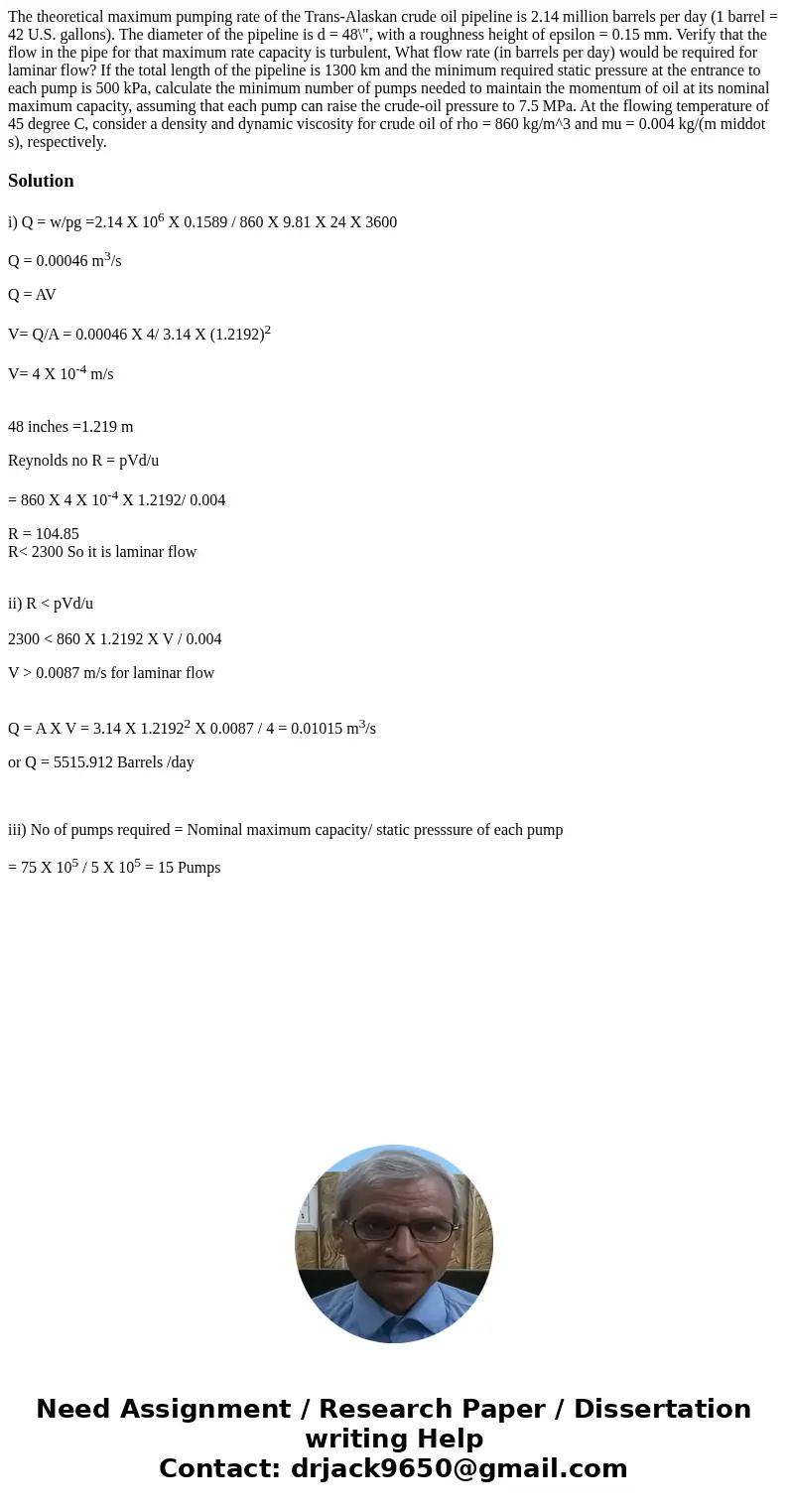The theoretical maximum pumping rate of the TransAlaskan cru
The theoretical maximum pumping rate of the Trans-Alaskan crude oil pipeline is 2.14 million barrels per day (1 barrel = 42 U.S. gallons). The diameter of the pipeline is d = 48\", with a roughness height of epsilon = 0.15 mm. Verify that the flow in the pipe for that maximum rate capacity is turbulent, What flow rate (in barrels per day) would be required for laminar flow? If the total length of the pipeline is 1300 km and the minimum required static pressure at the entrance to each pump is 500 kPa, calculate the minimum number of pumps needed to maintain the momentum of oil at its nominal maximum capacity, assuming that each pump can raise the crude-oil pressure to 7.5 MPa. At the flowing temperature of 45 degree C, consider a density and dynamic viscosity for crude oil of rho = 860 kg/m^3 and mu = 0.004 kg/(m middot s), respectively.
Solution
i) Q = w/pg =2.14 X 106 X 0.1589 / 860 X 9.81 X 24 X 3600
Q = 0.00046 m3/s
Q = AV
V= Q/A = 0.00046 X 4/ 3.14 X (1.2192)2
V= 4 X 10-4 m/s
48 inches =1.219 m
Reynolds no R = pVd/u
= 860 X 4 X 10-4 X 1.2192/ 0.004
R = 104.85
R< 2300 So it is laminar flow
ii) R < pVd/u
2300 < 860 X 1.2192 X V / 0.004
V > 0.0087 m/s for laminar flow
Q = A X V = 3.14 X 1.21922 X 0.0087 / 4 = 0.01015 m3/s
or Q = 5515.912 Barrels /day
iii) No of pumps required = Nominal maximum capacity/ static presssure of each pump
= 75 X 105 / 5 X 105 = 15 Pumps

 Homework Sourse
Homework Sourse